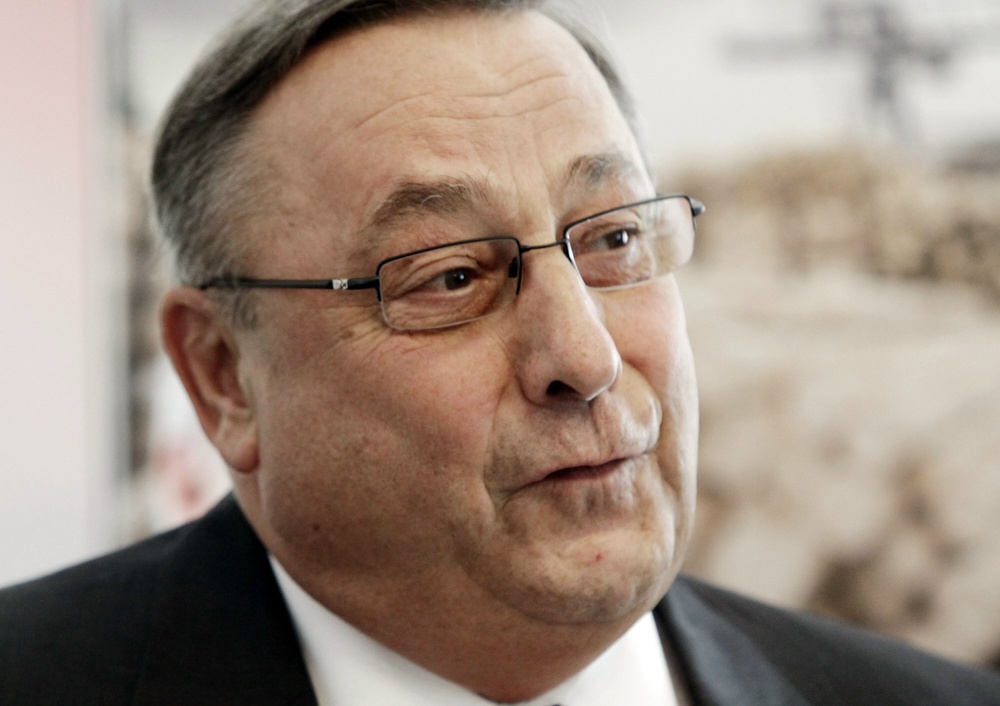Last week the anonymous — and conspicuously progressive — blog, The State of Maine, published posts detailing the campaign contributions of Richard Dyke, the former owner of Bushmaster Firearms Inc. and president of Windham Weaponry.
Connections to Bushmaster have become politically relevant in the aftermath of the school shootings in Newtown, Conn. The gunman used a Bushmaster AR-15 semiautomatic rifle during a rampage that killed 28 people, including 20 children.
Dyke, as the Portland Press Herald reported last week, has been a contributor to Maine political candidates. Most recipients have been Republicans, a fact that The State of Maine was quick to point out.
But what about political contributions from the National Rifle Association, the nation’s largest, most powerful pro-gun advocacy group?
Maine Republicans lead the way in NRA contributions, but Democrats have also benefited from the group’s war chest.
Republican U.S. Sen. Susan Collins received nearly $20,000 from the NRA’s political action committee from 1996 to 2002, but has not received any contributions since then.
Collins has received more than $17,000 in financial contributions from Dyke, the last one in 2007.
Democratic U.S. Rep. Mike Michaud has been the top recipient from the NRA’s PAC, receiving $18,000 since 2004 including $3,000 this year.
The NRA has spent more than $135,000 on Maine legislative elections since 2002, according to Maine ethics commission records.
More than $109,800 from the NRA has gone to Republican candidates. Of that total, $73,480 bolstered Gov. Paul LePage’s 2010 run for governor. Dyke and his family have also contributed to LePage.
Without LePage, the NRA spending still favored Republican candidates by about 67 percent over the last 10 years. The organization also appeared to favor some Democrats over others.
Former Democratic Sen. Bill Diamond of Windham received $3,750 from the NRA’s $17,290 in Democratic contributions since 2002.
Diamond was co-chairman of the Criminal Justice Committee from 2005 to 2008. More than two-thirds of the NRA contributions came before and after his chairmanship.
Dyke contributed $25,000 to Diamond’s political action committee in 2009.
It’s apparent that the NRA’s spending has increasingly slanted toward Republican legislators. The NRA has made 65 expenditures on behalf of Republican candidates and eight for Democrats since 2008.
The division was a little more even between 2002 and 2007, when the NRA made significant donations to Republican and Democratic leadership PACs.
The NRA’s spending on state races is small relative to other interest groups. This year, the teachers union-backed PAC spent over $172,000.
The NRA’s money doesn’t tell the whole story of its influence.
The organization has reported varying numbers for its membership — somewhere between 4 million and 4.3 million, which it can mobilize against noncompliant lawmakers.
The one-two punch explains how the NRA can out-influence other interest groups, even business groups.
Earlier this year, the NRA spent over $100,000 to defeat Debra Maggart, a Republican lawmaker in Tennessee, after she helped to block a bill that would have allowed individuals to keep firearms in their vehicles parked on employers’ properties.
The Maine Legislature passed a similar bill in 2011 despite the objections of business groups including, notably, the Maine State Chamber of Commerce, one of the most influential business advocacy groups in the state.
MAGAZINE CALLS LEPAGE VULNERABLE IN 2014
Governing magazine recently identified five governors who will be vulnerable in their re-election bids in 2014. LePage is on the list.
The rankings evaluated the 38 gubernatorial races coming in 2014 and used recent polls and consultations with analysts to generate the findings.
The magazine said LePage is vulnerable almost by default because he won in 2010 with only 38 percent of the vote.
It added that the governor isn’t helped by a “hard-line conservative approach,” a “penchant for outspoken remarks” and an approval rating that has hovered around the same level at which he was elected.
Additionally, the magazine cited a poll by Public Policy Polling that showed LePage trailing a generic Democrat opponent.
Governing said LePage’s re-election chances will increase dramatically if 2010 independent candidate Eliot Cutler runs again in 2014.
Of the 38 governors who will be up for re-election in 2014, the magazine found 22 not vulnerable, 10 potentially vulnerable and five vulnerable.
LePage joined Rick Scott, R-Fla.; Dannel Malloy, D-Conn.; Pat Quinn, D-Ill.; and Lincoln Chafee, I-R.I., in the vulnerable category.
SPEAKING OF POLLS
It was hard to follow the presidential election and not hear or read about a pollster’s political bias, or more politely, house effect.
The theory is that some results in some polls skew toward Democrats or Republicans either because of methodology or the inherent bias of the pollster. Political operatives seize the house effect to discredit or champion a particular poll that favors or hurts their candidate.
Public Policy Polling, for example, is often labeled as a Democratic-leaning firm. The tag was reinforced in 2010 when New York Times statistician Nate Silver calculated that the firm had a 3.1-point Democratic house effect during the 2010 midterm elections.
Public Policy Polling apparently favored Republicans in 2012. Silver’s post-election rankings showed the firm had a 1.6-point bias toward Republican Mitt Romney in its presidential polls.
Silver calculated that the Maine-based Maine Peoples Resource Center, a firm linked to the progressive Maine Peoples Alliance, had a 4-point Republican bias in its presidential poll.
Critical Insights, the firm commissioned by the Portland Press Herald, had an 8-point Republican bias.
In both instances, the bias rate is identical to the error rate that Silver assigned the Maine polls.
The Maine Peoples Resource Center error rate closely aligns with Silver’s average 4.3 error rate for automated polls.
Critical Insights, which did live interviews, was well off the average 3.5 error rate for live interview polls.
Staff Writer Steve Mistler can be contacted at 791-6345 or at:
smistler@mainetoday.com
twitter/stevemistler
Send questions/comments to the editors.



Comments are no longer available on this story